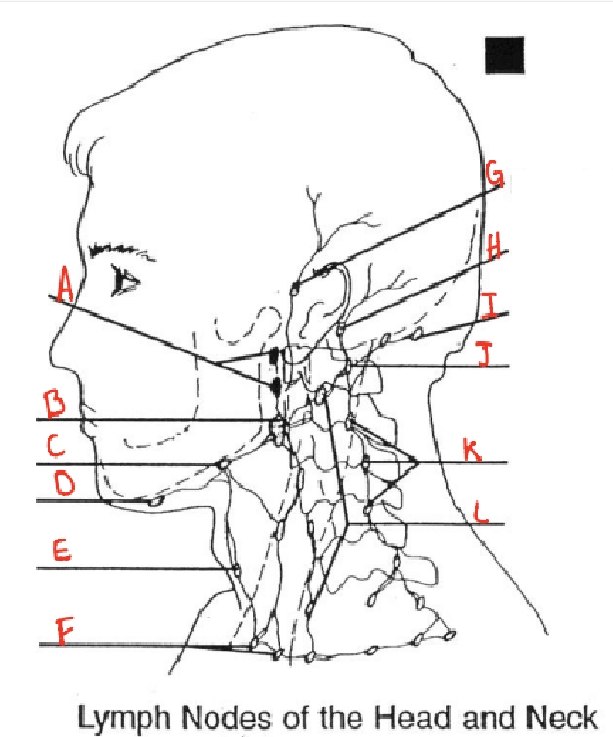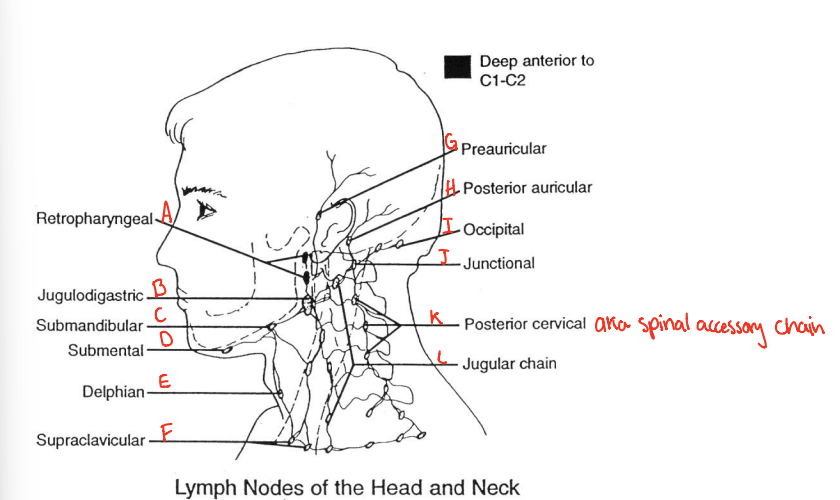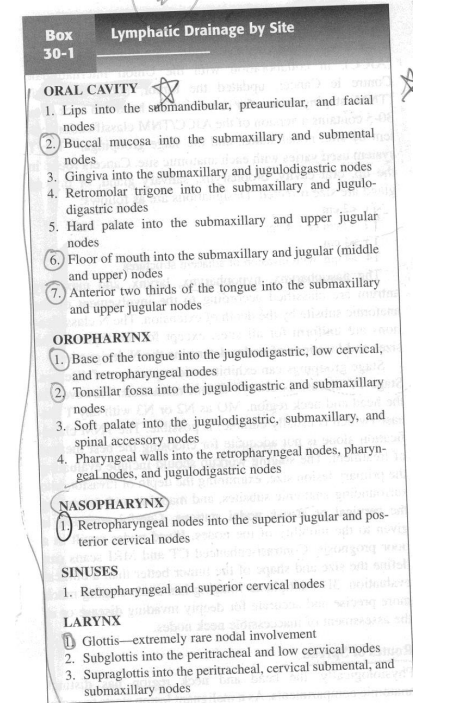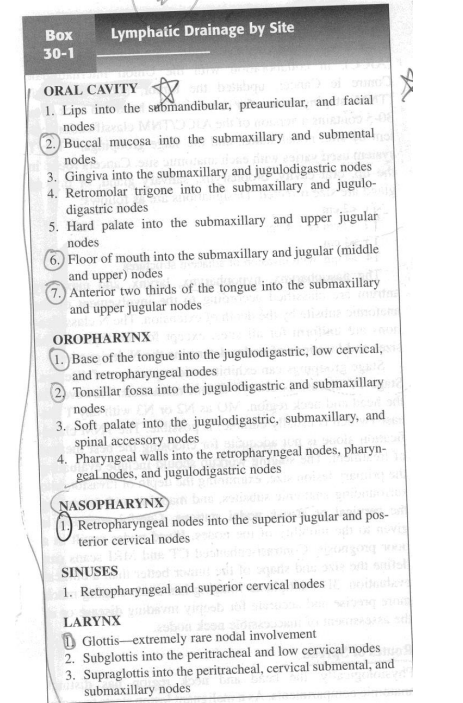6. H&N: Mets & Pathology
1/12
There's no tags or description
Looks like no tags are added yet.
Name | Mastery | Learn | Test | Matching | Spaced |
|---|
No study sessions yet.
13 Terms
How do H&N cancers spread
Mostly thru:
direct local invasion
Lymphatics
Rarely thru:
Hematologic route
What organ(s) does H&N cancer mets to?
Lungs
What H&N cancers are most likely to mets?
Nasopharynx
Hypopharynx
Parotid


Nearly ___ of the lymph nodes in the body are found in the H&N region
1/3
____ in an adult that persists for more than ____ should be regarded as suspicious and should be evaluated for malignancy
enlarged cervical node
1 week
term. Jugulodigastric group
def. The group of neck nodes below the mastoid tip
Port sizes for most H&N cancers are (Small/ Large). Reasoning?
Large
Due to: Risk of nodal spread
What is a con of having a large port size for H&N cancers to tx lymphatics?
High morbidity

cricle back to

Most H&N cancers are of the following pathology
Squamous cell carcinoma
Which pathology is more likely to occur in the salivary glands?
Adenocarcinomas are most likely to occur in the___
Which pathology is more likely to occur in places of abundant lymphoid tissue (nasopharynx, BOT, Tonsils)?
Lymphoepitheliomas are most likely to occur in____